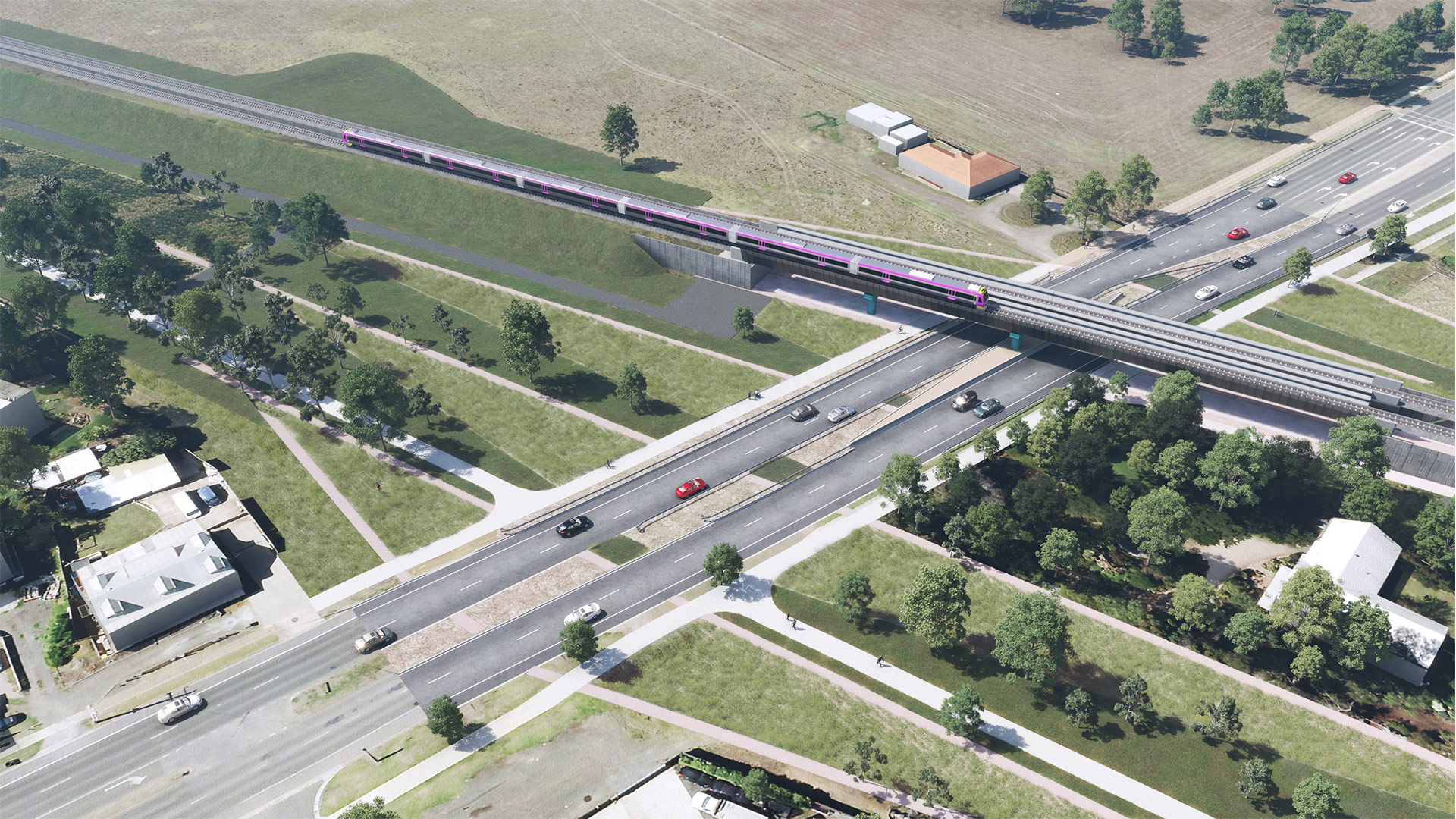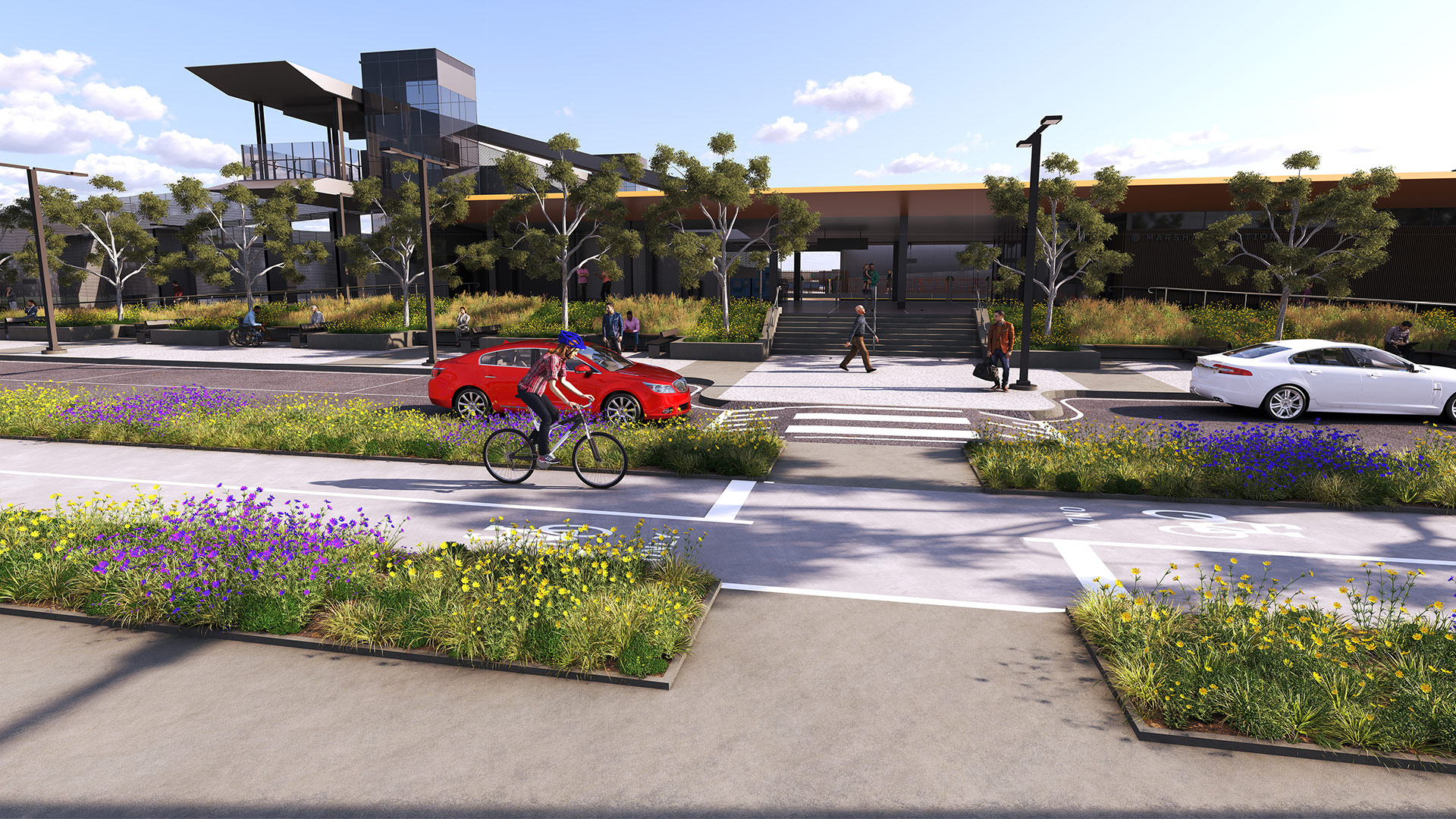9 December 2022
The South Geelong to Waurn Ponds Duplication will improve public transport in growth areas south of Geelong, as well as provide enormous benefits to those communities in terms of new green open space, landscaping and quality urban design that will reflect and enhance the local area.
To safely deliver and enable major construction on the South Geelong to Waurn Ponds Duplication, trees and vegetation need to be removed along the rail corridor and nearby.
Most of the trees and vegetation in or near the rail corridor need to be removed because they are directly in the path of where new infrastructure will be located, as indicated on the map below.
Other trees and vegetation may still need to be removed to enable construction or because trees are close to works and their root structure may be damaged, causing a safety risk to trains, pedestrians and workers.
Significant tree planting and landscaping will occur as soon as construction is complete on the project.
Prior to that, Regional Rail Revival is working closely with the City of Greater Geelong, Barwon Water, V/Line and VicTrack on replanting and landscaping plans for the area, which will be finalised in consultation with the community over the coming months.
As a minimum, two trees will be planted for every one removed, with a focus on replanting in areas where trees have been lost.
Tree and vegetation removal required to build the South Geelong to Waurn Ponds Duplication

Tree and vegetation removal
Tree and vegetation removal has been ongoing since mid 2022 to accommodate new infrastructure required to enable more frequent and reliable services and better stations for passengers on the Geelong Line.
Visit our vegetation and landscaping approach page to learn more.
Looking after wildlife
Qualified wildlife ecologists will inspect all trees and vegetation prior to removal and handlers will safely relocate any wildlife to a suitable habitat nearby.
Minimising the extent of tree and vegetation removal required
We understand that mature trees are a really important feature of this area.
Every effort has been made to preserve as many trees as possible through the design of the project.
Trees and vegetation are only removed where required to build new infrastructure or if trees will be damaged due to works to the point where they won't survive.
Feedback received through recent consultation indicated the community wants:
"abundant greenery"
"native plants that are low maintenance"
"vegetation that reflects the character of the local area" We will work with the community to meet these expectations, with landscaping plans to be developed progressively with key stakeholders and the community.
New public open space, recreation areas, urban design, public artworks and landscaping will leave a legacy for the community.
Melbourne Yellow Gums
We know the importance of native vegetation to biodiversity along the rail corridor. We have collected seeds of native trees, including Melbourne Yellow Gums for cultivation at the West Coast Indigenous Nursery. These young trees will be replanted along the rail corridor and in parks and reserves around Geelong.

Reuse and repurposing strategy
We are exploring ways to reuse the trees that need to be removed including:
- seed collection of native trees such as Melbourne Yellow Gums for cultivation at the West Coast Indigenous Nursery
- donating excess mulch to community groups, schools and City of Greater Geelong Council.
- donating trees to local gardening clubs
- using trees as habitat logs as part of the landscaping plan
- tree burls donated to Wadawurrung Traditional Owners Aboriginal Corporation to be repurposed
- trees donated to local Men’s Sheds for wood working and bird or possum nests
Please contact us if you represent a community group that would like to be involved.
We are committed to planting new vegetation, with two trees to be planted for every one removed during construction of the project.
Revegetation and landscaping plans
At least two trees will be planted for every one removed during construction of the project.
Native trees and plants will be used to enhance the local area and improve biodiversity.
We are collecting seeds of native trees for replanting along local streets and along the new walking and cycling paths.
Trees won’t always be replanted ‘like for like’ but will be replanted in the same location or close by as much as possible.
We are exploring other opportunities for revegetation with Barwon Water and the City of Greater Geelong outside of the rail corridor, in parks and reserves around Geelong.
Planting in places where trees have had to be removed for construction will start as soon as works in the area are finished or when the new trees can be protected.
We are working closely with Wadawurrung Traditional Owners Aboriginal Corporation and the City of Greater Geelong on landscaping plans and local residents will soon have the opportunity to get involved.
